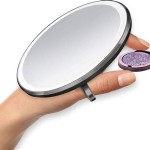How to Use Screen Mirroring: A Comprehensive Guide
Screen mirroring, a technology that allows users to wirelessly transmit the display of one device onto another, has become increasingly prevalent in both personal and professional settings. This capability provides a versatile solution for presentations, entertainment, collaboration, and accessibility. Understanding the principles behind screen mirroring and the diverse methods available for implementation is crucial for leveraging its full potential.
This article aims to provide a comprehensive guide on how to use screen mirroring. It will explore different technologies, compatibility considerations, and practical steps for establishing a connection between various devices. The focus will be on clarity and accuracy, enabling readers to effectively utilize screen mirroring in their respective contexts.
Understanding Screen Mirroring Technologies
Several technologies facilitate screen mirroring, each with its own strengths and limitations. The most common protocols include Wi-Fi Direct, Miracast, AirPlay, and Chromecast. The choice of technology depends on the devices involved and the intended use case.
Wi-Fi Direct establishes a direct wireless connection between two devices without requiring an intermediary Wi-Fi network. Both devices must support Wi-Fi Direct. This protocol is often used for quickly sharing files and mirroring screens. However, the range and stability of the connection can be affected by obstacles and interference.
Miracast is a wireless display standard developed by the Wi-Fi Alliance. It enables devices to stream audio and video content to compatible displays. Miracast is widely supported across different operating systems, including Android and Windows. It is a versatile option for mirroring screens onto TVs, projectors, and other displays. However, compatibility issues can arise between devices from different manufacturers, even if they both claim to support Miracast.
AirPlay is Apple's proprietary wireless streaming protocol. It allows users to stream audio and video content from Apple devices (iPhones, iPads, and Macs) to Apple TVs and AirPlay-compatible speakers and displays. AirPlay offers seamless integration within the Apple ecosystem and provides high-quality streaming performance. However, it is primarily limited to Apple devices, rendering it less suitable for environments with a mix of operating systems.
Chromecast is a device developed by Google that plugs into a TV's HDMI port and connects to a Wi-Fi network. Users can then "cast" content from their smartphones, tablets, or computers to the TV using compatible apps. Chromecast supports a wide range of streaming services and apps, making it a popular choice for home entertainment. While it primarily focuses on streaming content from apps, it also supports screen mirroring from Android devices and Chrome browsers. This extends its usability beyond simply casting pre-determined media.
Checking Device Compatibility
Before attempting to use screen mirroring, verify that the devices involved are compatible with the chosen technology. Compatibility information can typically be found in the device's specifications or user manual. It is also advisable to consult online resources and forums for known compatibility issues between specific devices.
For Miracast, look for the "Miracast" logo on the device packaging or in the settings menu. Android devices generally support Miracast, but older versions may require a software update. Windows devices also often include Miracast support, typically referred to as "Wireless Display" or "Connect to a wireless display."
For AirPlay, ensure that both devices are running compatible versions of iOS, iPadOS, or macOS. The target display must be an Apple TV or an AirPlay-compatible smart TV or speaker. Verify that AirPlay is enabled in the device's settings.
For Chromecast, the sending device (phone, tablet, or computer) must have the Google Home app installed. The Chromecast device itself needs to be properly configured and connected to the Wi-Fi network. Check the Google Home app for screen mirroring options or use the "Cast" feature within compatible apps.
If encountering compatibility issues, consider updating the device's operating system or firmware. Software updates often include bug fixes and support for newer screen mirroring technologies. Furthermore, review the settings menu on both the sending and receiving devices. Ensure that screen mirroring is enabled and that the devices are discoverable.
Step-by-Step Guide to Screen Mirroring
The specific steps for screen mirroring vary depending on the devices involved and the chosen technology. However, the general process typically involves the following:
Step 1: Enable Screen Mirroring on the Receiving Device. On a smart TV, this typically involves selecting the appropriate input source (e.g., HDMI) where the mirroring device is connected or enabling a specific screen mirroring setting in the TV's menu. On devices like Apple TV or Chromecast, ensure they are powered on, connected to the network, and ready to receive a connection.
Step 2: Initiate Screen Mirroring on the Sending Device. The process for initiating screen mirroring differs based on the operating system. On Android devices, navigate to the settings menu and look for options such as "Cast," "Screen Mirroring," "Smart View," or "Wireless Display." Select the receiving device from the list of available devices.
On Windows devices, press the Windows key + K to open the "Connect" pane. Select the receiving device from the list. If the receiving device is not listed, ensure that both devices are connected to the same Wi-Fi network and that Bluetooth is enabled.
On iOS and macOS devices, open the Control Center (swipe down from the top-right corner on iPhones and iPads; click the Control Center icon in the menu bar on Macs). Tap or click the "Screen Mirroring" icon and select the receiving device from the list.
Step 3: Adjust Settings as Needed. Once the connection is established, adjust the display settings on the sending device to optimize the mirrored image. This may involve changing the resolution, aspect ratio, or orientation. Some devices also offer options for adjusting the audio output.
Troubleshooting Tips: * Ensure that both devices are connected to the same Wi-Fi network, if applicable. * Verify that Bluetooth is enabled on both devices. * Check for software updates on both devices. * Restart both devices. * Move the devices closer together to improve the wireless signal strength. * Disable any firewalls or security software that may be blocking the connection. * Consult the device's user manual or online resources for troubleshooting tips specific to the device.
The method of screen mirroring can be influenced by various factors. The operating system in use plays a pivotal role, often dictating the protocols and connection methods available. For example, Apple's AirPlay is primarily limited to devices running iOS, iPadOS, and macOS, offering a seamless experience within the Apple ecosystem but limiting interoperability with other platforms. Similarly, Android devices often leverage Miracast or proprietary solutions developed by manufacturers, such as Samsung's Smart View, for screen mirroring capabilities.
The network infrastructure also significantly affects the performance and reliability of screen mirroring. A stable and robust Wi-Fi network is essential for a smooth and uninterrupted streaming experience. Congestion on the network, interference from other wireless devices, or limitations in the router's bandwidth can all negatively impact the quality of the mirrored display. When utilizing Wi-Fi Direct, the proximity of the devices and potential obstacles obstructing the direct wireless connection can similarly influence the connection's stability.
Furthermore, the hardware capabilities of both the sending and receiving devices influence the supported resolutions, frame rates, and overall quality of the screen mirroring experience. Older devices or devices with limited processing power may struggle to maintain smooth and high-resolution mirroring, resulting in lag, stuttering, or pixelation. The display capabilities of the receiving device also dictate the maximum resolution and color accuracy that can be achieved through screen mirroring.
Considering these factors and carefully selecting the appropriate technology and configuration settings can significantly improve the screen mirroring experience. Careful consideration should be given to the environment, device capabilities, and specific requirements of the task at hand.

Screen Mirroring Iphone To Tv Or Computer A Complete Guide

What Is Screen Mirroring Iphone How To Set It Up
:max_bytes(150000):strip_icc()/Screenmirroring-041707463b7d446592a259b4e8137f3d.jpeg?strip=all)
How To Mirror An Iphone A Tv Without Apple

Use Airplay To Stream Or Mirror The Screen Of Your Iphone Ipad Apple Support

What S Screen Mirroring Iphone And How Does It Work Rapid Repair

How To Use Apple Airplay Mirror Your Iphone Mac Screen On Tv Roku And More Cnet

Use Airplay To Stream Or Mirror The Screen Of Your Iphone Ipad Apple Support
:max_bytes(150000):strip_icc()/001-apple-airplay-mirroring-explained-2000228-cc422795c9314a4aad12ba2e02fc92fa.jpg?strip=all)
How To Use Airplay Mirroring

What Is Screen Mirroring And How Do I Use It With My Samsung Tv Mobile Device

How To Enable Screen Mirroring On A Samsung Galaxy Device








